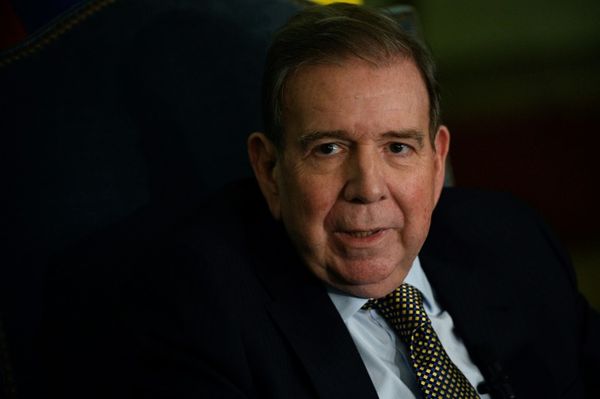
“People understand that we can’t do everything at once,” Treasurer Jim Chalmers said last month.
Similar “steady as she goes” talking points were parroted by Labor’s frontbench last week in response to increasing pressure to raise the rate of JobSeeker, including from the government’s own backbench and expert committee.
The message was we just haven’t reached the Right Time™ — when the government’s stars and chakras perfectly align to facilitate a politically and economically costless welfare expansion. Just hang tight and trust the process.
This framing not only ignores the fact recipients have been hanging tight for decades while politicians have subordinated their reasonable demands to countless frivolous boondoggles, or the issue’s moral and practical urgency — every day Canberra dithers is another day struggling recipients count their last coins and send their kids to school with empty lunchboxes.
It also assumes the policy terrain won’t get worse from here, that by the time Prime Minister Anthony Albanese arrives at substantive compassion on his sweatless stroll, the May 2023 budget won’t look like the Right Time™ in retrospect.
But there are enough storm clouds gathering, and enough present bright spots, to suggest the Right Time™ is now.
It’ll only get more expensive
Australia’s unemployment rate is nearly at a 50-year low. The number of JobSeeker recipients has accordingly declined, hitting its lowest level since the pandemic in March. This has heavily discounted the price tag for raising the dole.
The government should push to maintain full employment. But given the Reserve Bank is raising interest rates, and some of the inevitable consequences are rising business costs, higher redundancies and lower hiring, some job losses are likely. The International Monetary Fund predicts our unemployment rate to rise from 3.5% to 4% by December.
So sure, committing to a raise now will likely make the government liable for larger outlays in future. But that’s what shrewd governments do — capitalise on opportune moments to bake in their priorities, so even if costs grow over time, voter attachment and backflip aversion force alternative savings.
The budget will only get worse
Not only is the cost relatively cheap, but the government’s capacity to pay is temporarily secure. Thanks to booming commodity prices and low unemployment, Treasury’s tax receipts are much higher than expected. Economists believe Chalmers will even announce a small surplus at next month’s budget — indeed, the Finance Department confirmed a rolling surplus for the year to March.
The budget position is likely to deteriorate though, given the structural gulf between our meagre tax revenue and our ballooning commitments. Chalmers is probably destined to confront this shortfall eventually and, depending on his proposals, may not want to couple broad tax rises with handouts to the poor — for fear of handing populist slogans to Peter Dutton.
It’ll only get less popular
Which brings us to the question of electoral viability. As the AFR’s Phillip Coorey wrote on Thursday:
Senior Labor people confide there are no extra votes for the government in increasing welfare, but there are risks. Increasing the dole in a low unemployment environment, when every other shop or café on the high street has a ‘help wanted’ notice in the window, tends to foster resentment, especially among the low-paid such as cleaners, who work their guts out for not much more than welfare.
Aside from stretching the meaning of “not much more” — it’s 57% of the minimum wage — Coorey and his sources’ analysis is circular. We can’t raise welfare when unemployment is low because jobs are plentiful (despite the fact most recipients can’t work full-time due to sickness or disability). But we didn’t raise it pre-COVID when unemployment was higher due to cost concerns. In this conception, the Right Time™ is literally never.
Polling also shows relative support for a raise — 42% favour, 31% oppose, 26% unsure, according to Resolve. Other polls have put support at up to 55%. The electorate has been complicit with our heartless leaders in deprioritising this issue for decades, but we’ve reached a moment of relative public compassion.
But this support may weaken if the government later poses a link between welfare generosity and unpopular tax changes. Support is higher for other spending measures too, and as another election gets closer, pressure to prioritise sweeteners for swing voters and marginal seats will also rise.
It’s time
Albanese may have correctly calculated that bold progressive reforms are best not advocated for from opposition (though even this is debatable given the entangled variable of Bill Shorten’s popularity in Labor’s 2019 loss). But the prime minister’s concerted timidity has extended into government beyond reason, to the point of squandering opportunities. It’s as if he believes voters are not merely unreliably progressive but intractably conservative, always, on all but the most banal issues, even when many tell pollsters they aren’t.
Sure, there are powerful forces entrenching apathy and stubbornness, from financial self-interest to media hysteria. But surely to think Australia is irretrievably beyond lifting our most vulnerable citizens above the poverty line is a cynical misreading.
Hawke and Keating, those bold reformers so hallowed by Labor’s present leaders, raised unemployment benefits repeatedly (27% in total), including soon after Hawke’s first election when inflation was higher than it is now. Their actions substantially cut poverty.
Such legacies are not built on bided time and bitten tongues. The Right Time™ to raise the rate was the day Albanese took office. The second-best time is now.







